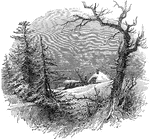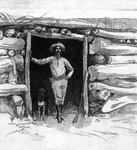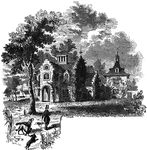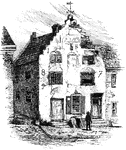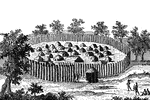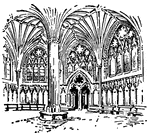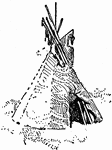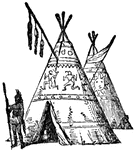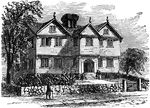The Housing ClipArt gallery offers 209 illustrations of houses in many styles, as well as parts of houses, and homes and birthplaces of several famous historical figures. Additional illustrations of houses may be found under specific country galleries of the ClipArt Places collection.
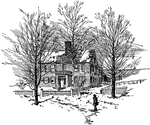
John Sullivan's House
The home of General John Sullivan, an American general in the Revolutionary War and a delegate in the…
!["Although the characteristics of this class of buildings are generally uniform, yet shades of difference occur here or there. These deviations are perceptible in the various countries where wooden houses are met with, and are found even in the different cantons of Switzerland. It would, however, carry us too far to enter more fully into various points of difference. [This image] exhibits a characteristic example of one of these Swiss-cottages or chalets."](https://etc.usf.edu/clipart/73800/73803/73803_swiss_house_mth.gif)
Swiss House in the Canton of Berne, Iseltwald
"Although the characteristics of this class of buildings are generally uniform, yet shades of difference…
!["The third class of timber buildings which has to be described is the so-called Swiss-Cottage style [shown here]. This class belongs exclusively to the country in contradistinction to the town. It is only lately that its application has been extended to other purposes, as for example, (and in combination with framed half-timbered construction) to railway stations, &c."](https://etc.usf.edu/clipart/73800/73802/73802_swiss_houses_mth.gif)
Group of Swiss Houses
"The third class of timber buildings which has to be described is the so-called Swiss-Cottage style…
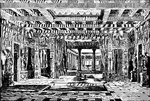
The Interior (Atrium and Peristylium) of Pansa's house at Pompeii, Restored
Illustration of a restored atrium and peristylium of the House of Pansa at Pompeii. The impluvium, pool,…
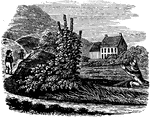
The Longest Way Round, is the Shortest Way Home
"These two boys have just been let out of school, and are returning home. Their father's house is seen…

Tobacco Cultivation in Colonial Virginia
Tobacco being harvested in the Virginia Colony. By 1612, John Rolfe's new strains of tobacco had been…

Van Cortlandt Manor House
Originally, it was an 86,000-acre (350 km²) tract granted as a Patent to Stephanus Van Cortlandt in…
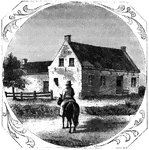
Vankleek House
The Vankleek House. It was built by Myndert Vankleek, one of the first settlers in Dutchess county,…
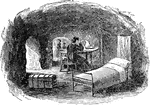
Cave Life in Vicksburg
During the siege, Union gunboats lobbed over 22,000 shells into the town and army artillery fire was…

Villere's Mansion
Jacques Phillippe Villeré (April 28, 1761 - 7 March 1830) was the second Governor of Louisiana after…

Washington Family Residence
Ferry Farm, also known as George Washington Boyhood Home Site or Ferry Farm Site, is the name of the…
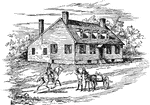
Washington's House in Fredericksburg
Ferry Farm, also known as George Washington Boyhood Home Site or Ferry Farm Site, is the name of the…

George Washington's House on Broadway, New York (1790)
In 1788, he built a magnificent home on Broadway, which in 1790 was leased to become the president's…

George Washington's House on Cherry Street, New York (1789)
In 1789, George Washington lived on Cherry Street, in a four-story mansion that belonged to Walter Franklin,…

Wentworth Mansion
Wentworth-Coolidge Mansion is a 40 room clapboard house. It was declared a National Historic Landmark…

Westover Plantation
Westover Plantation is located on the north bank of the James River in Charles City County, Virginia.…

